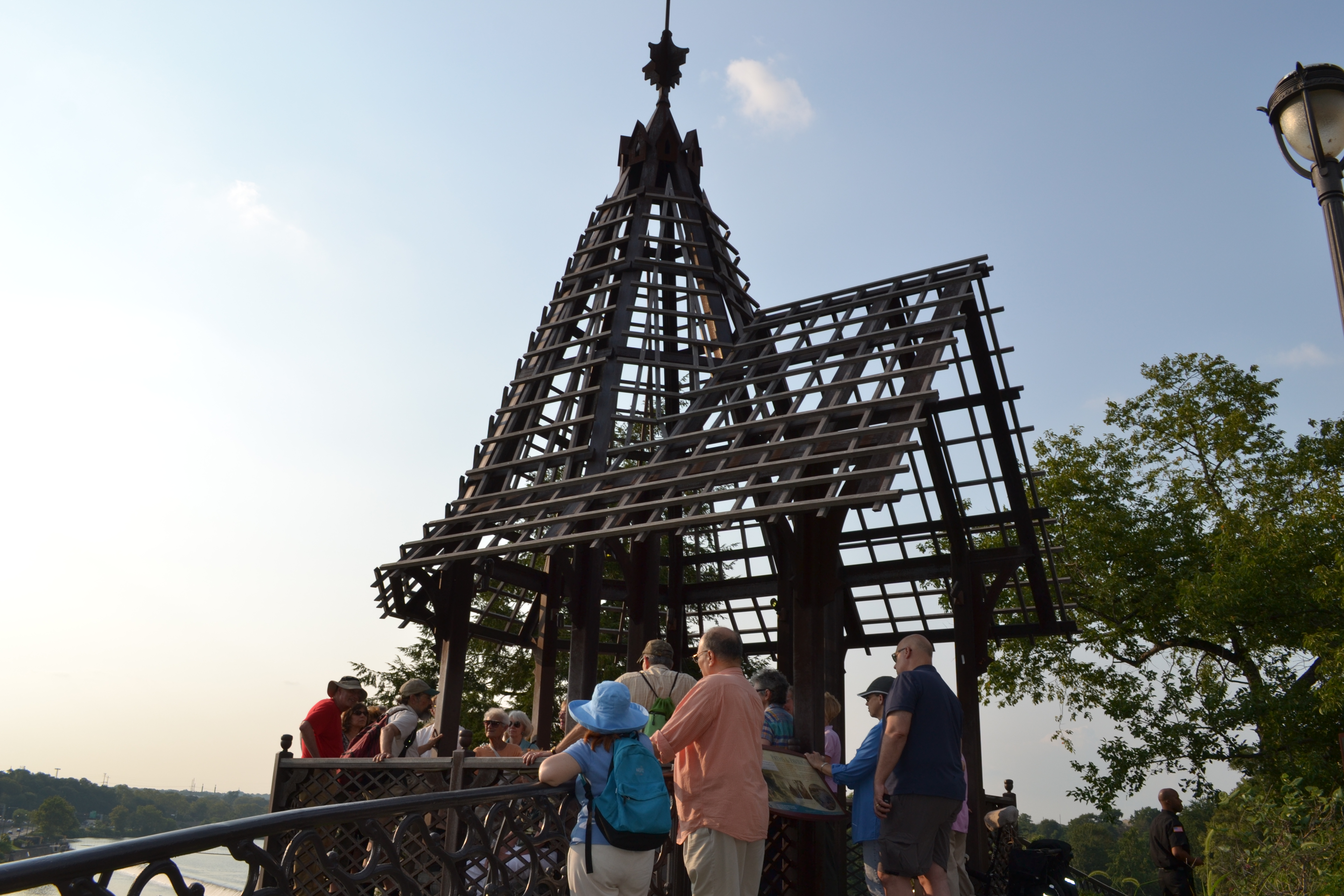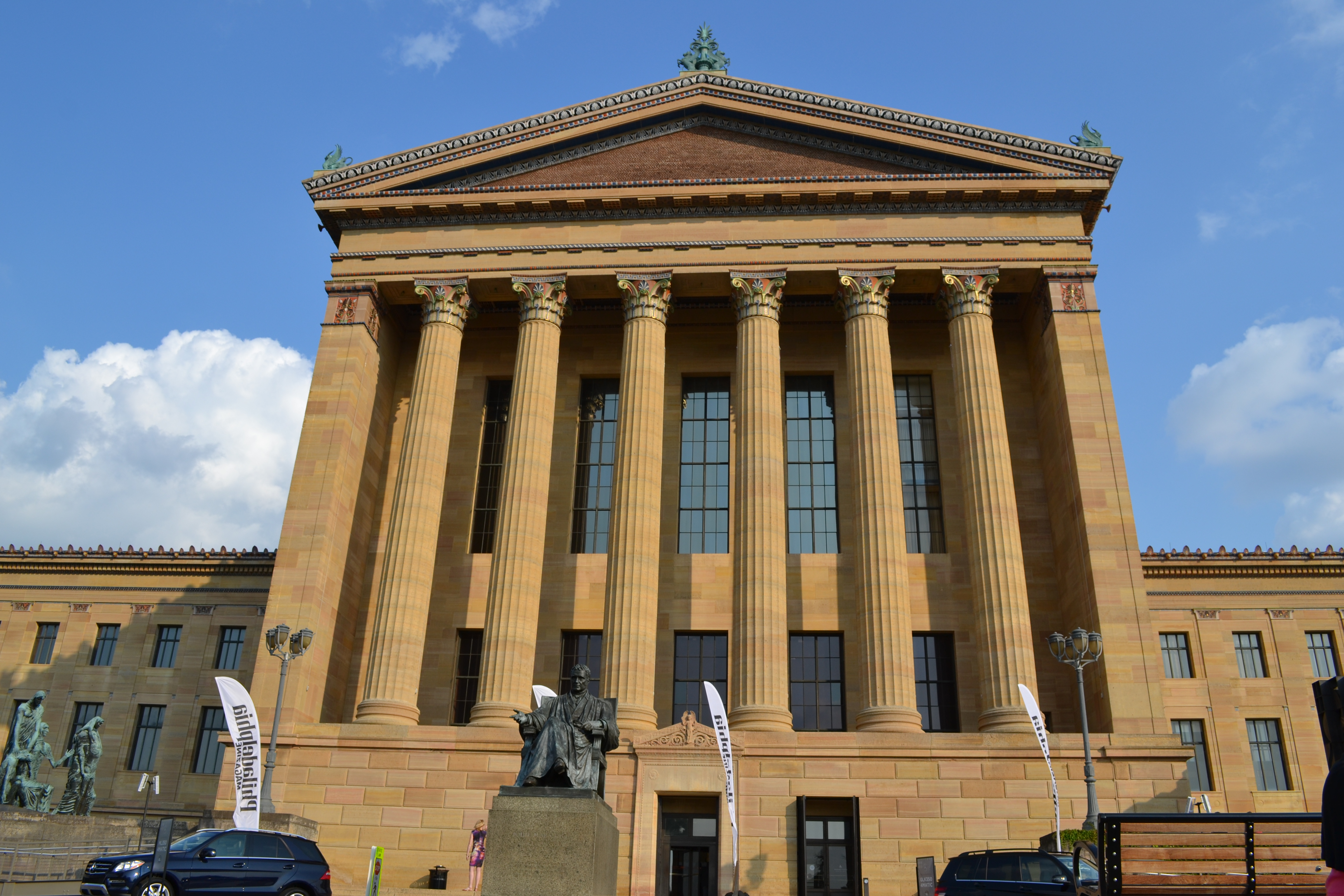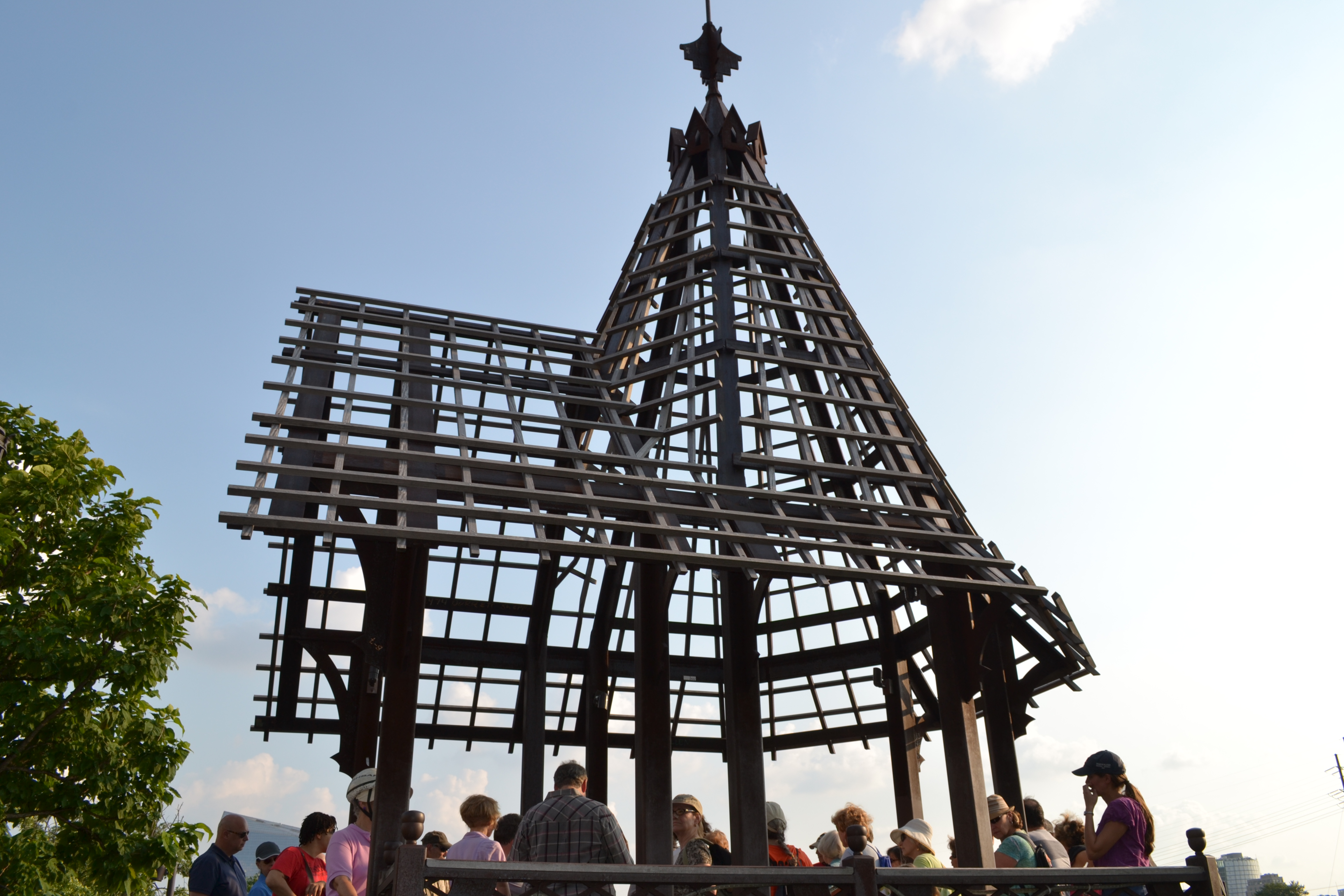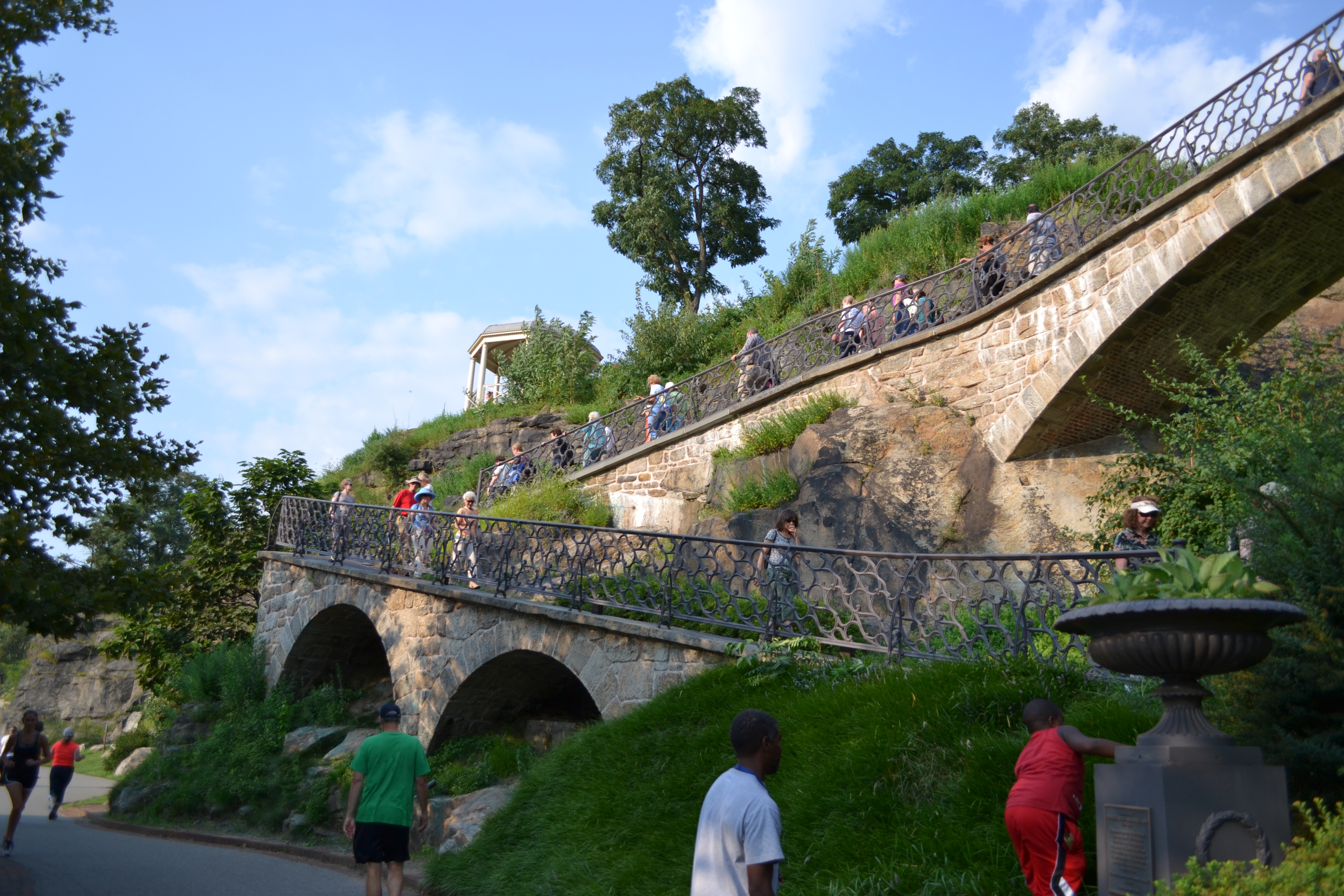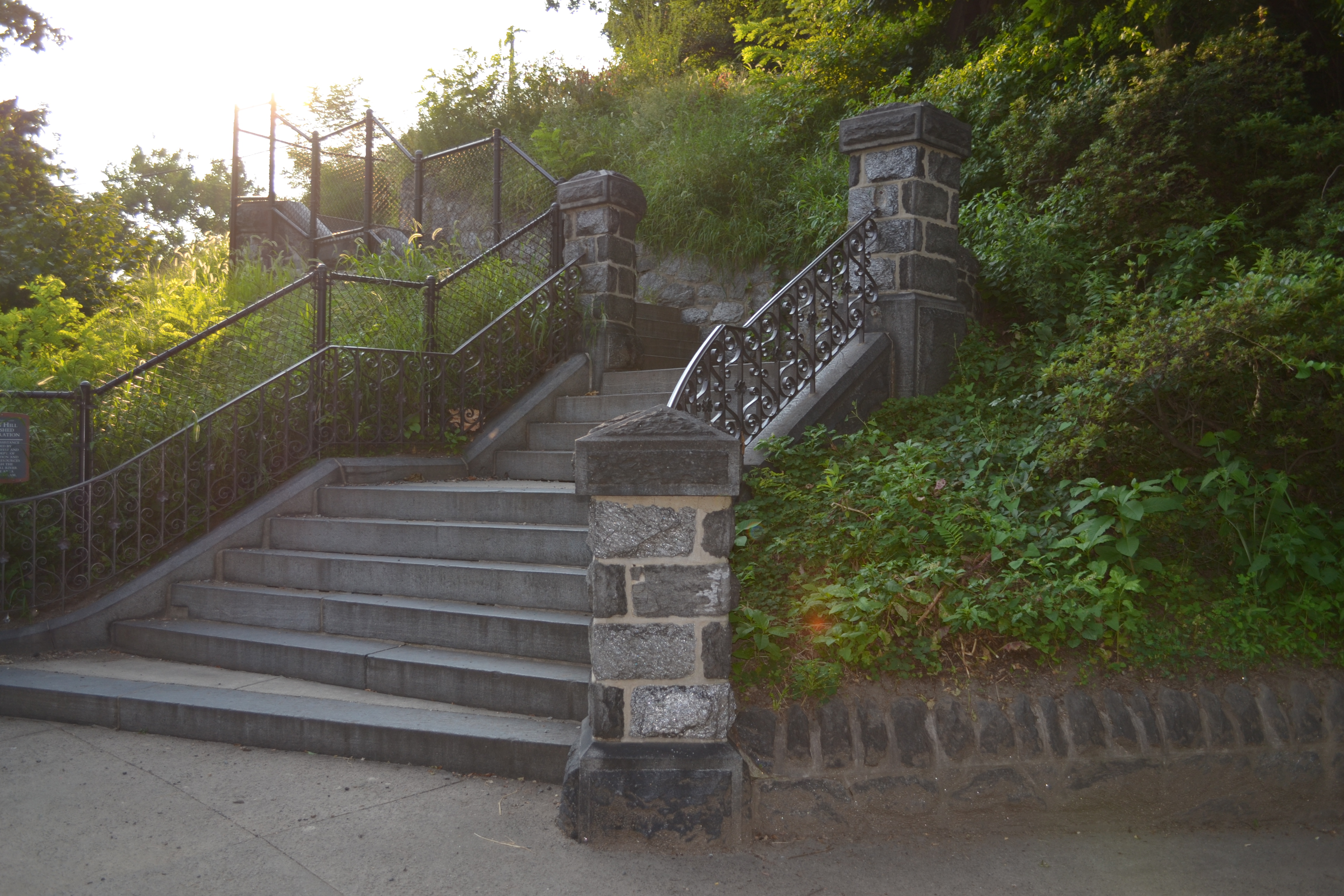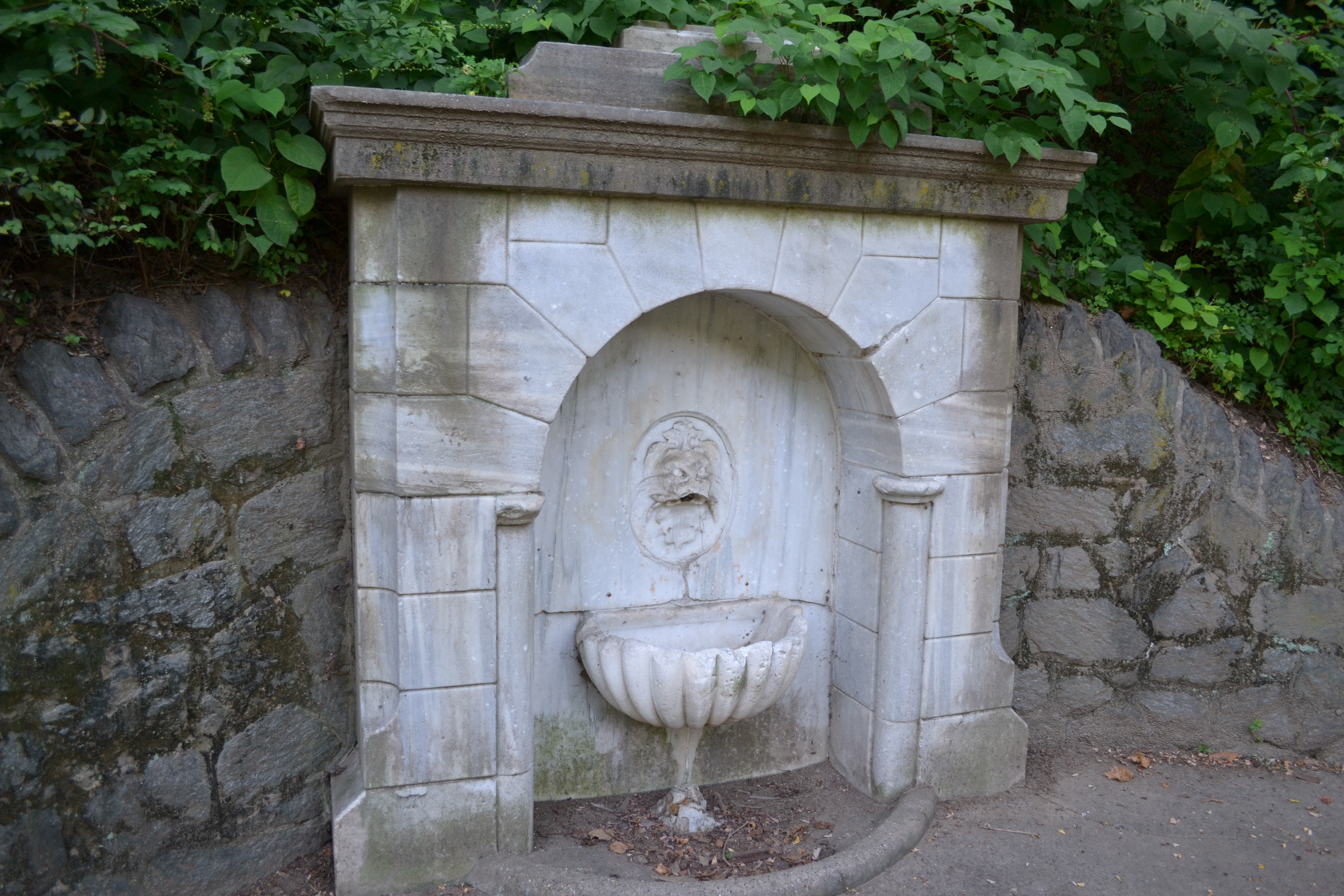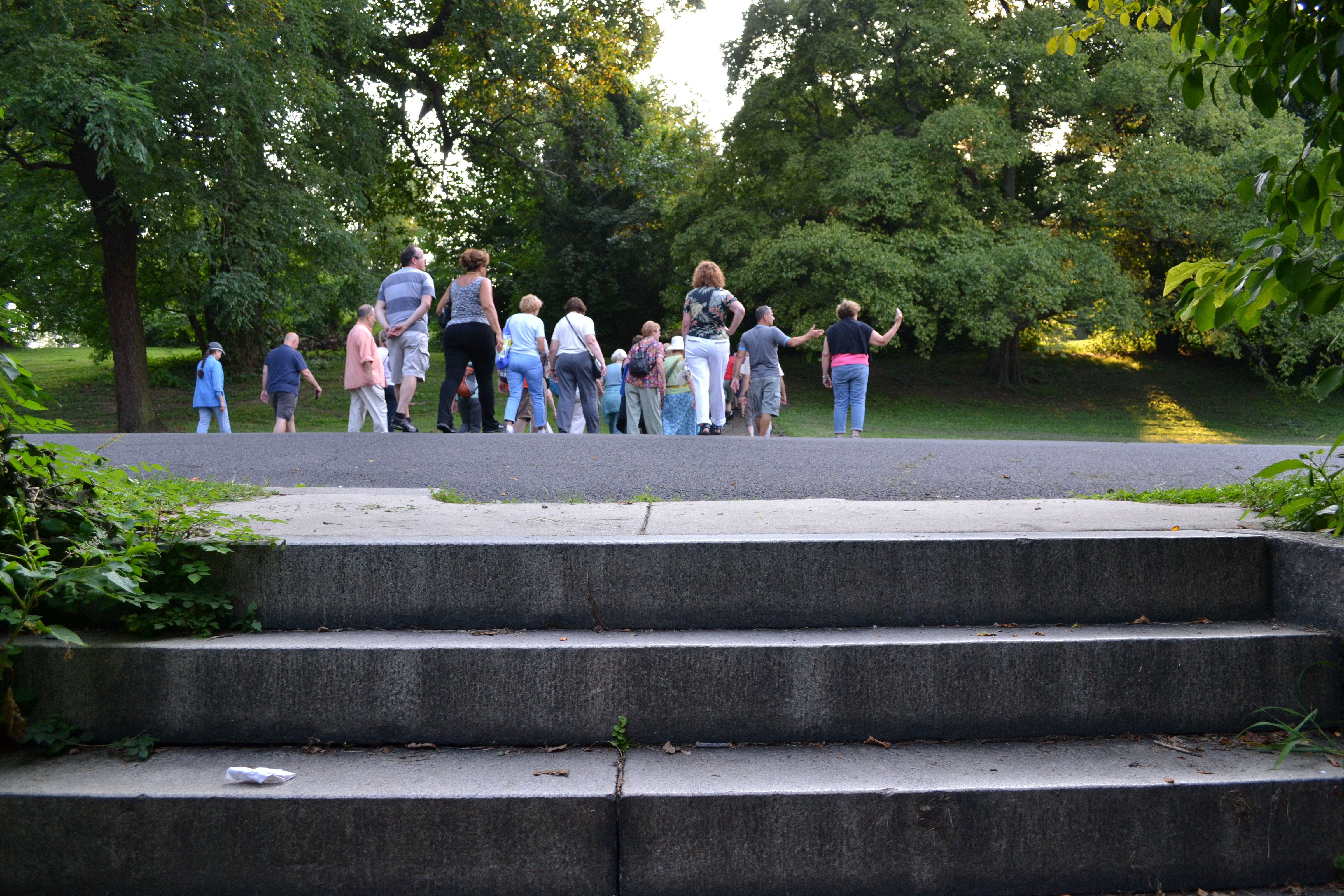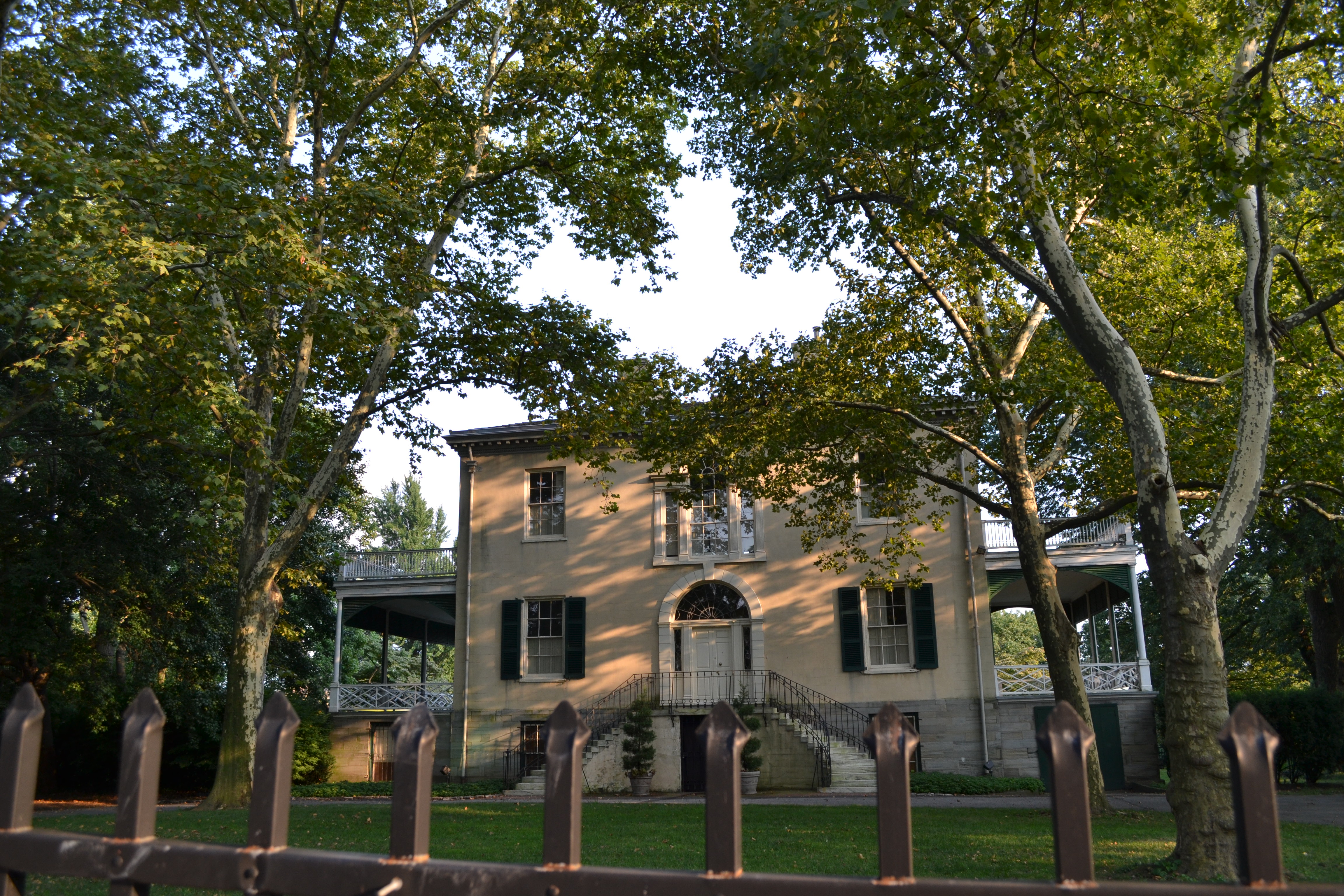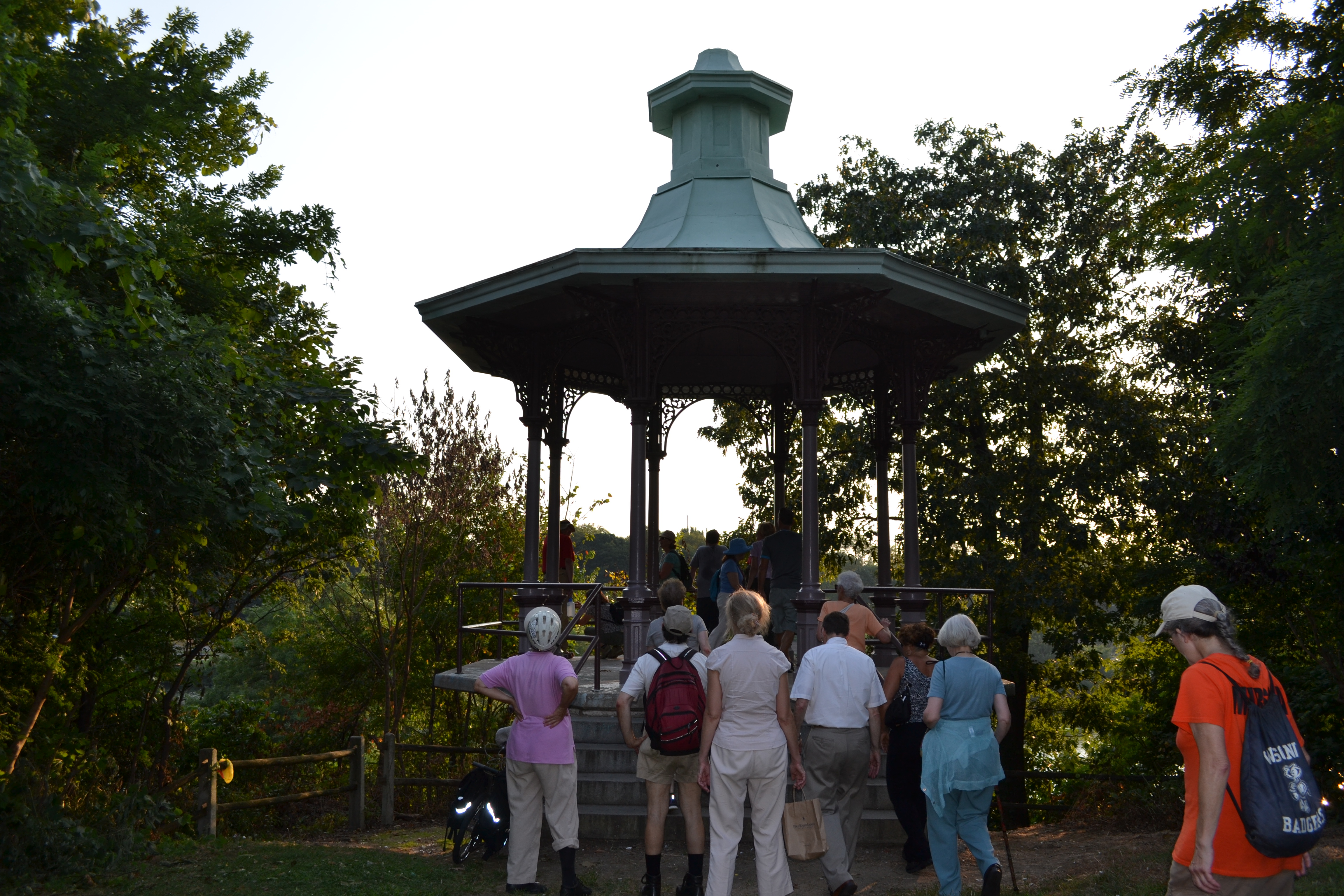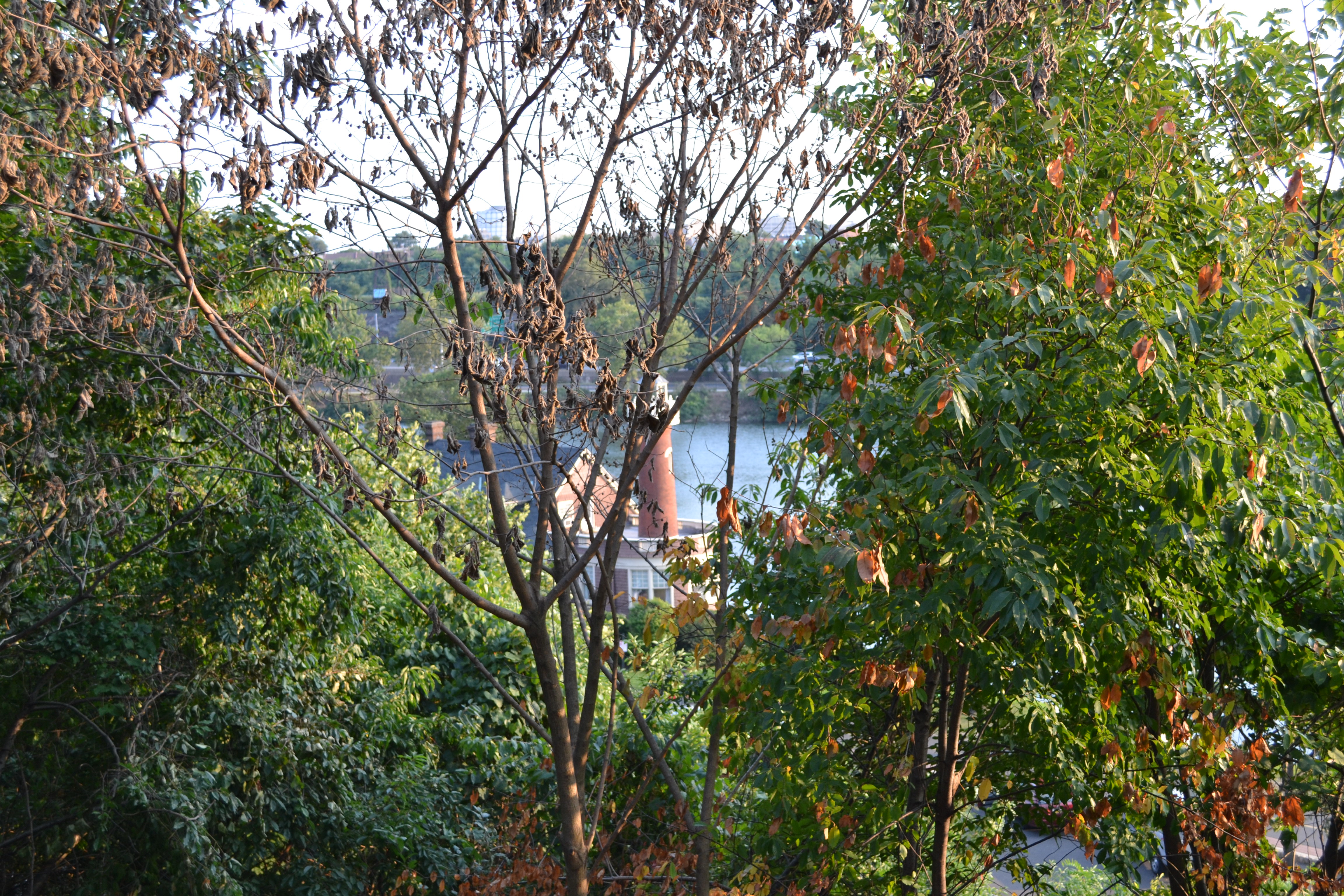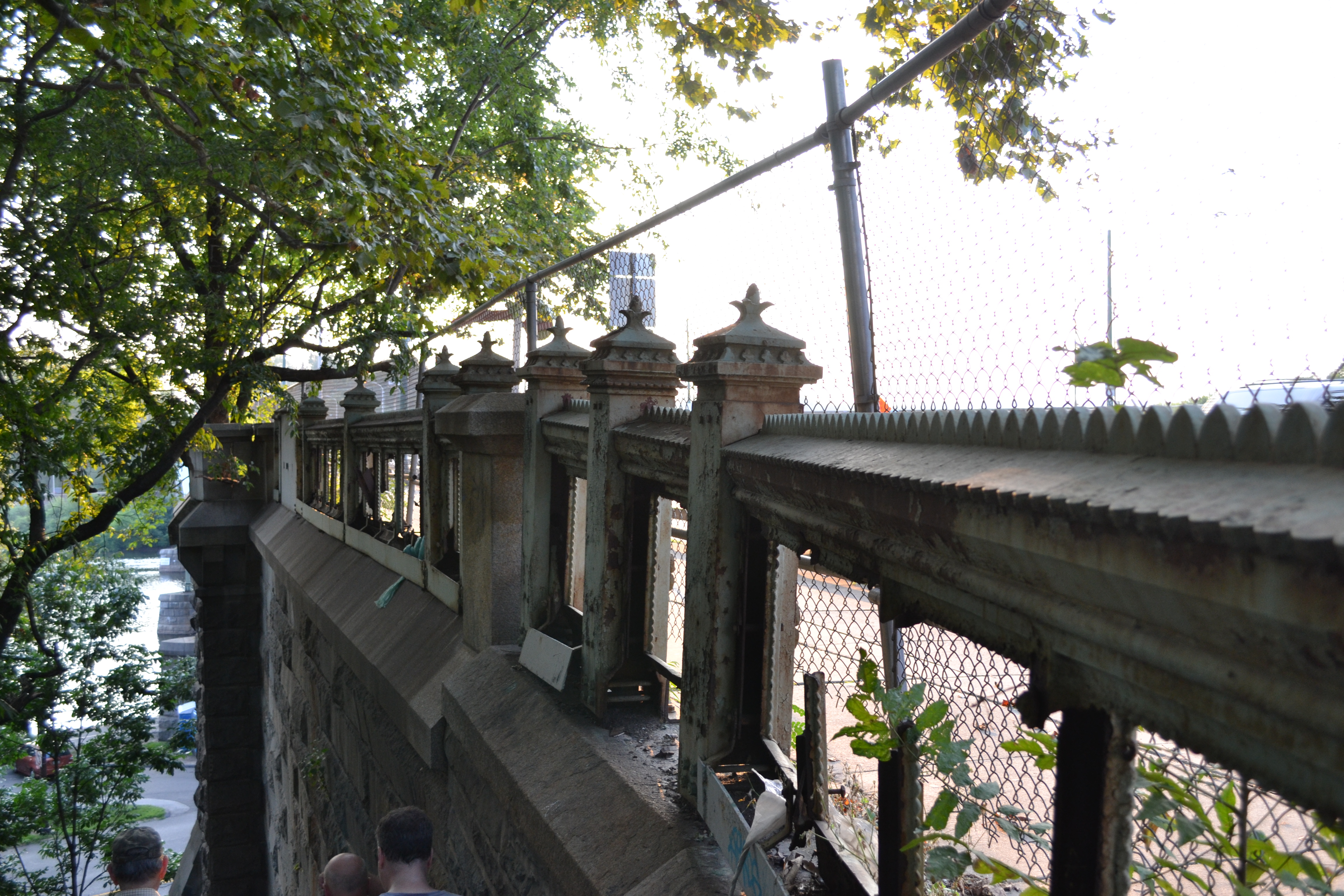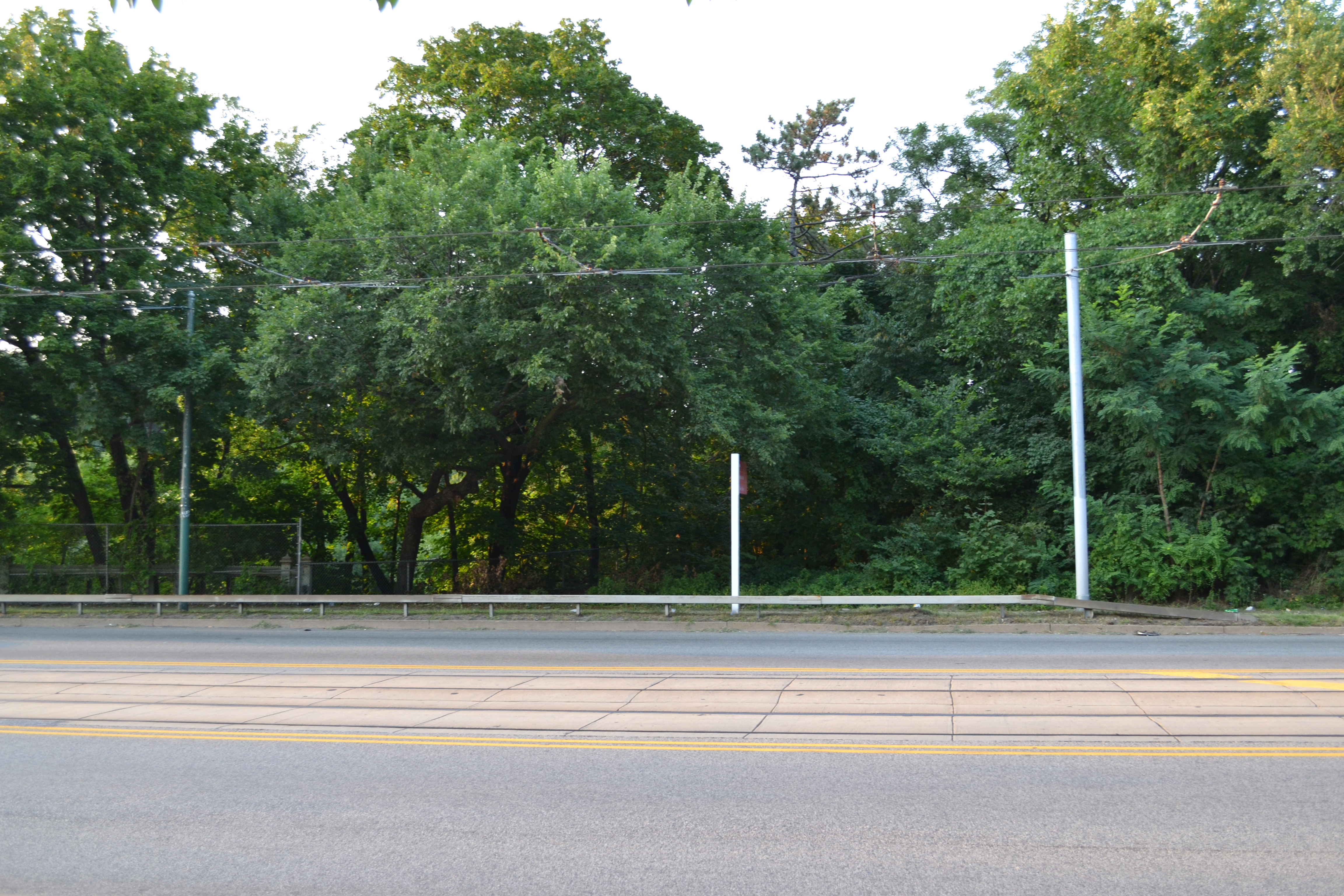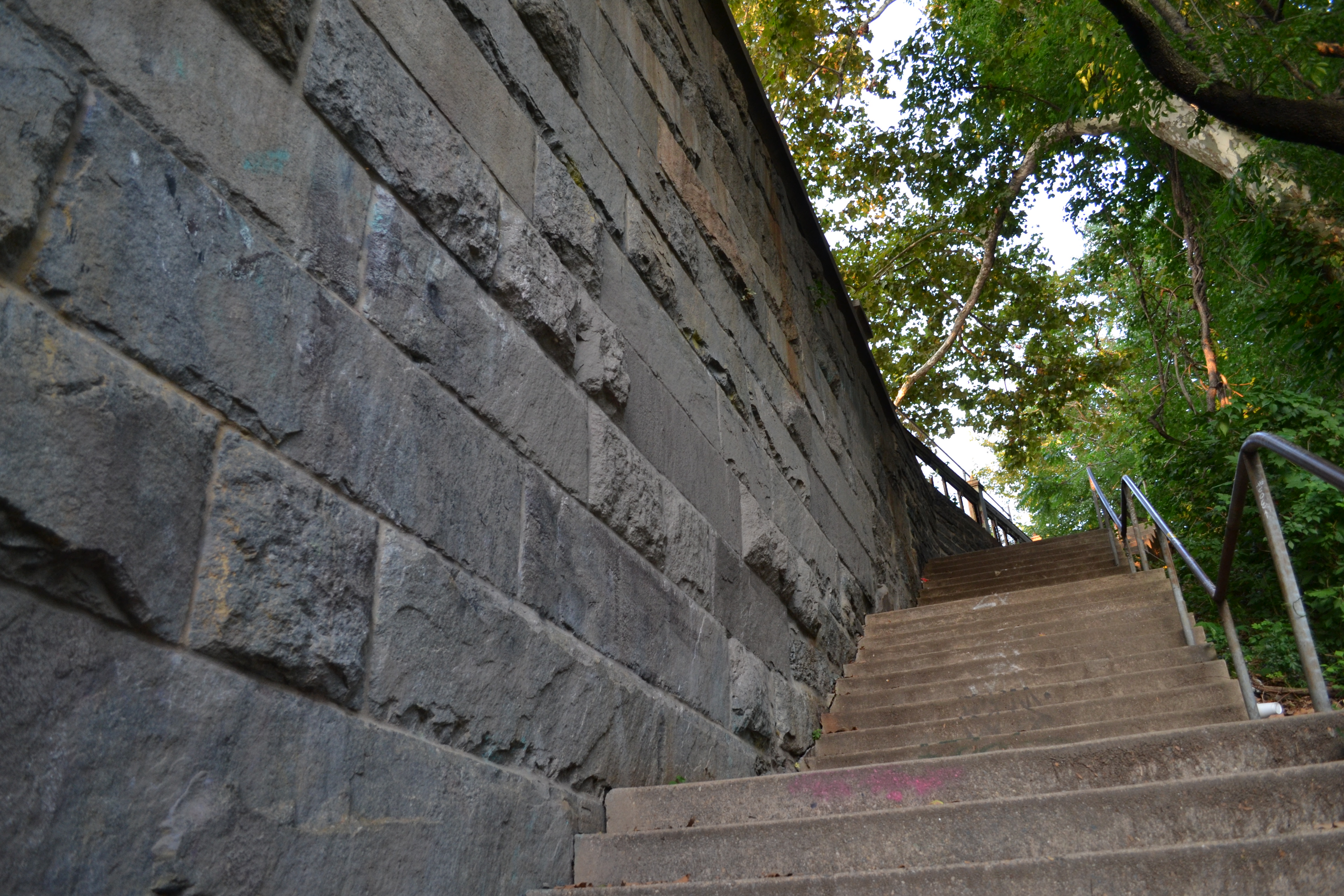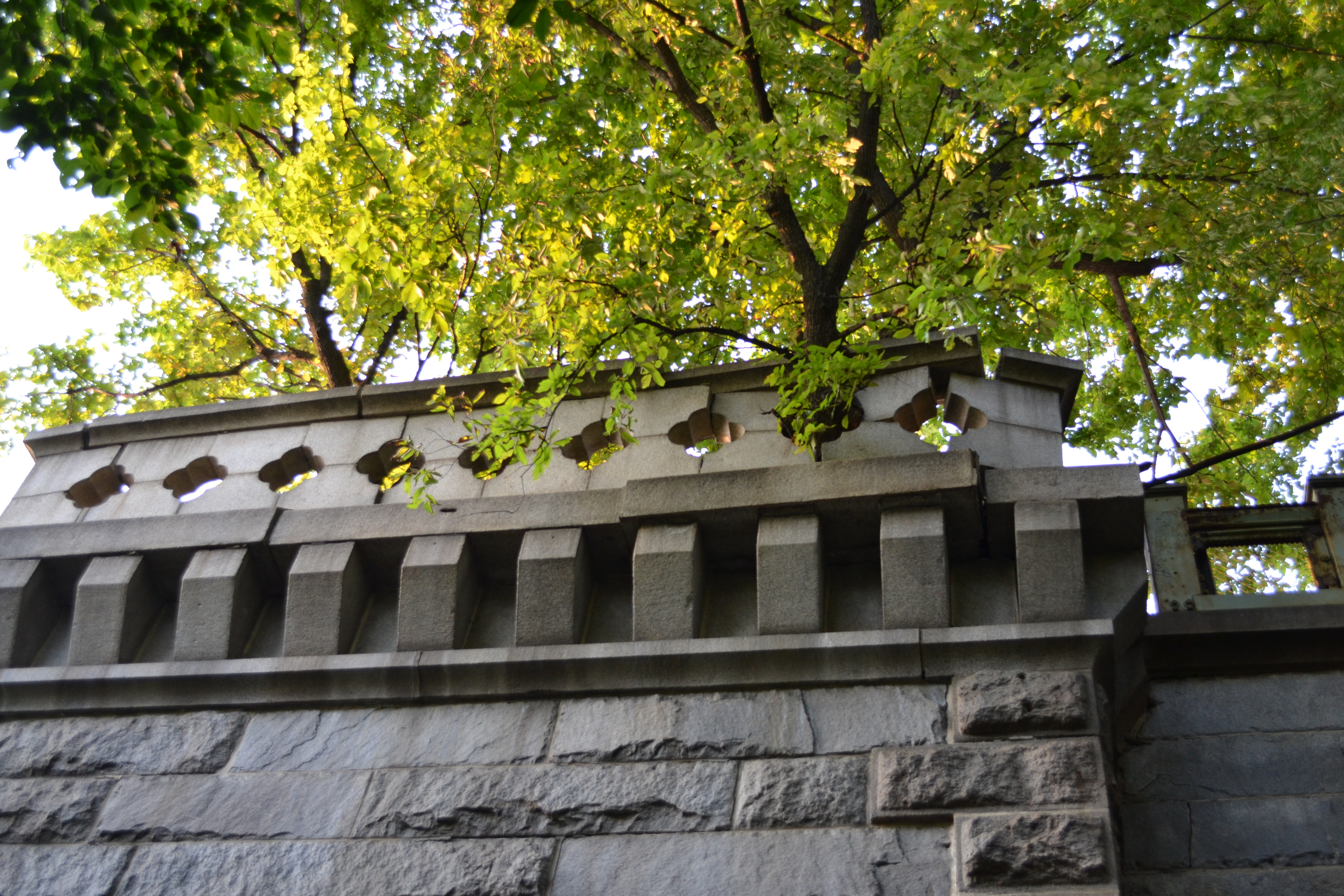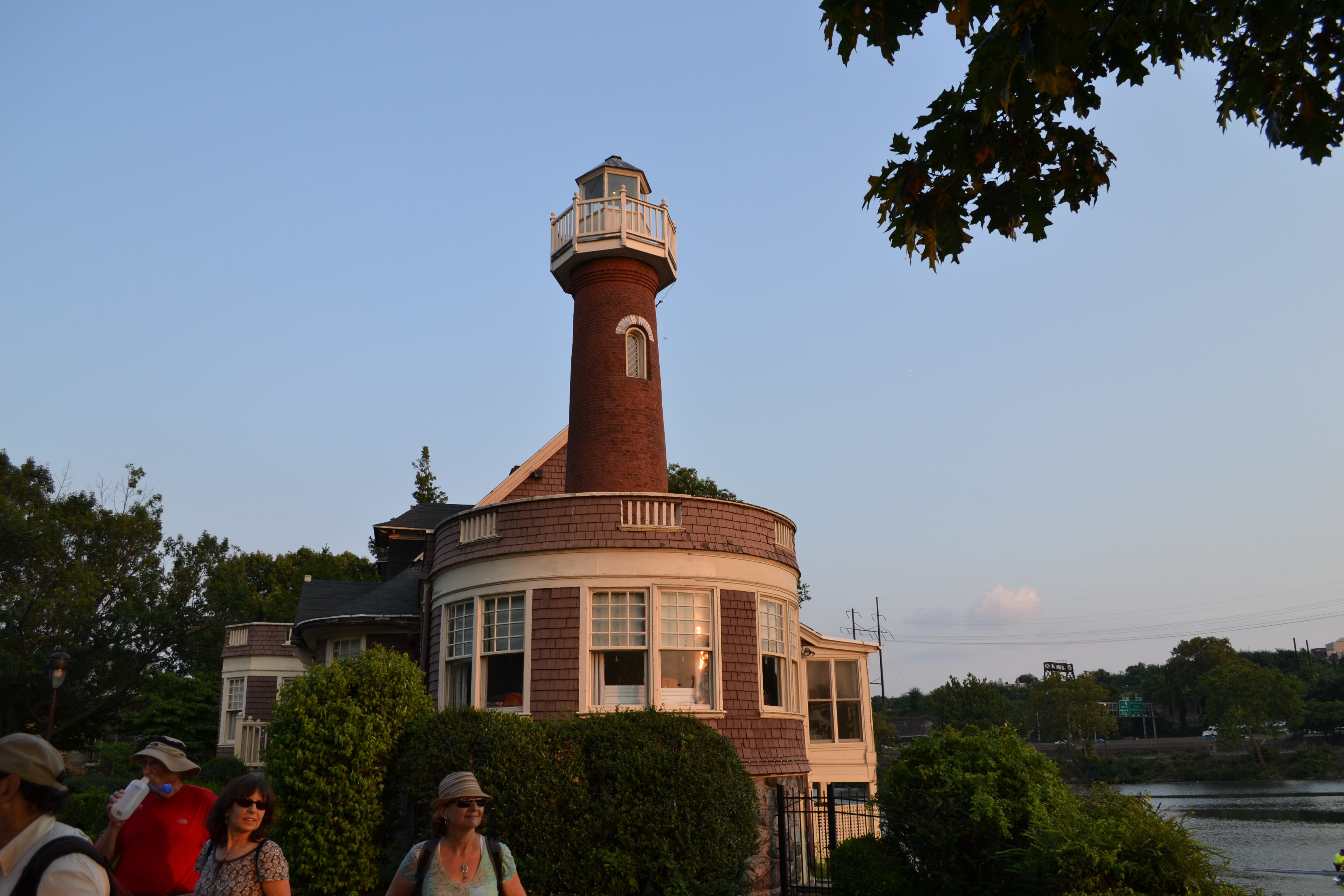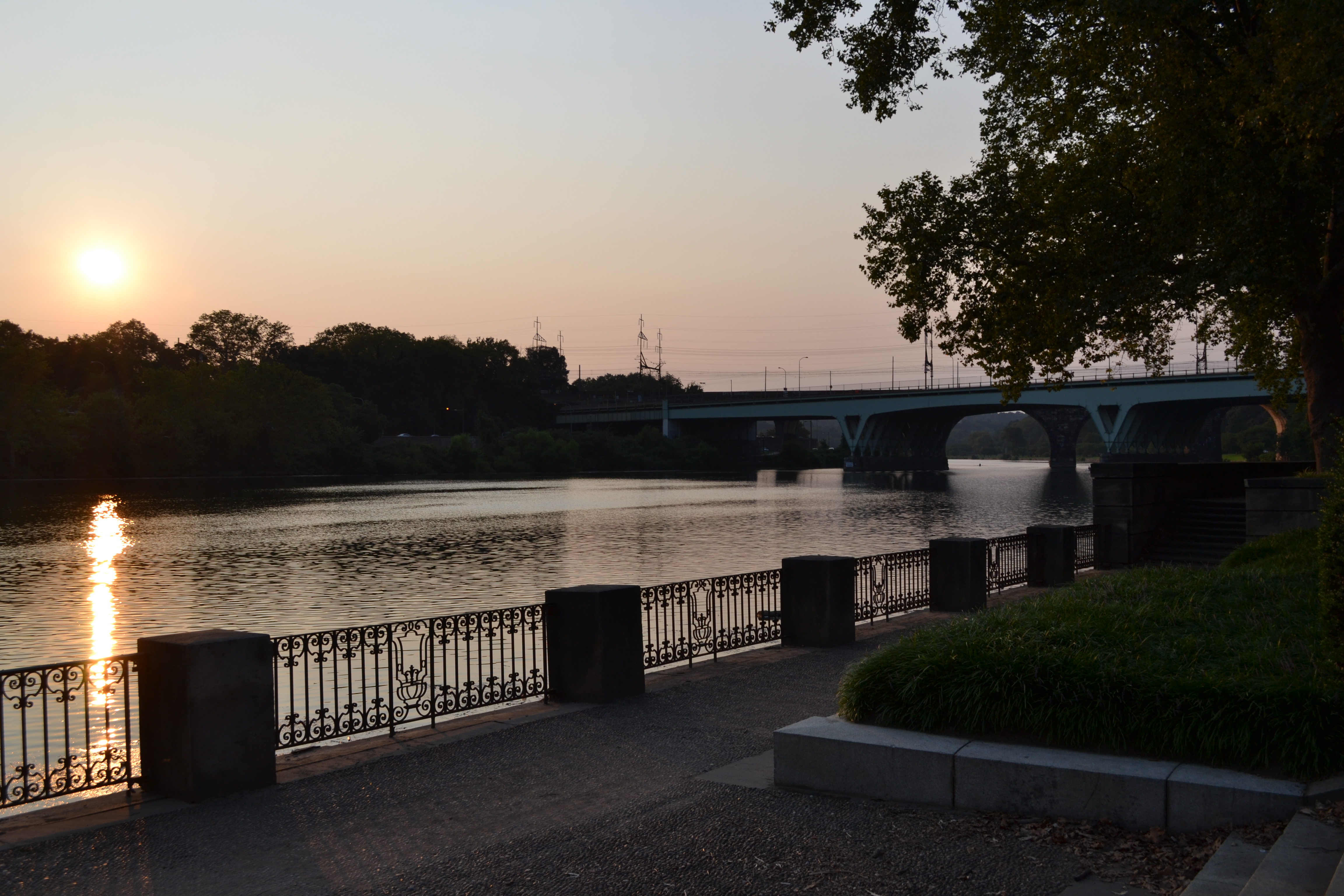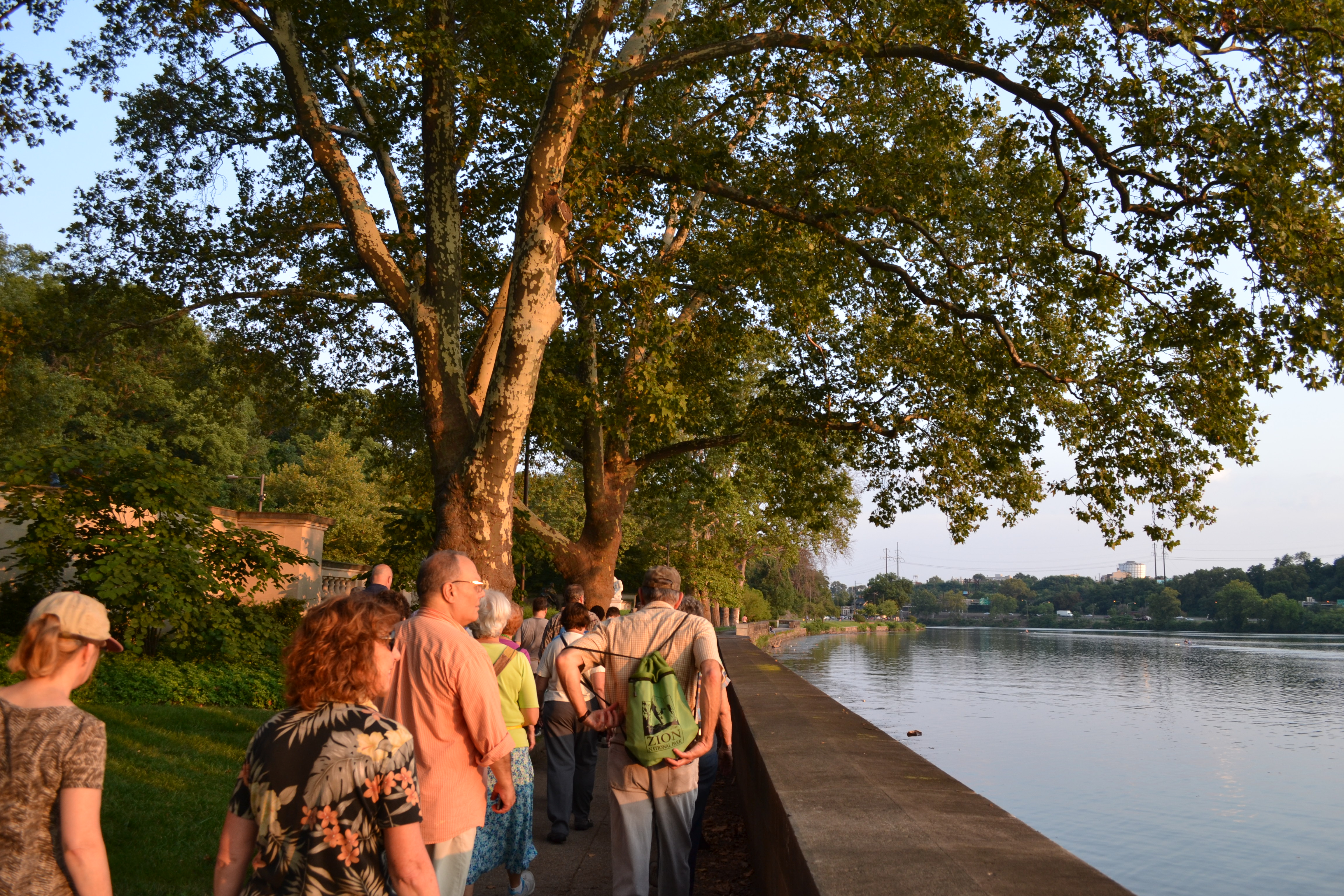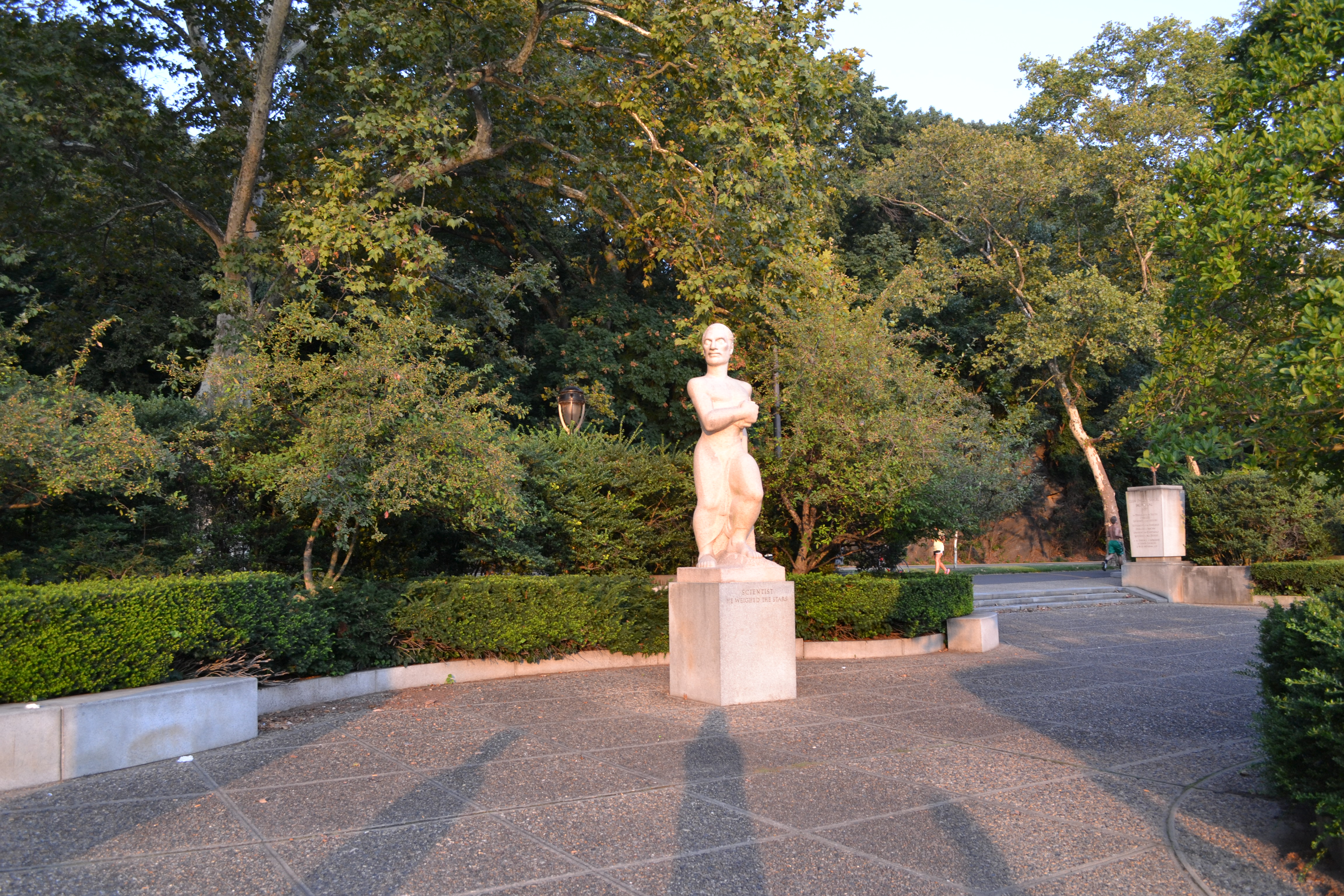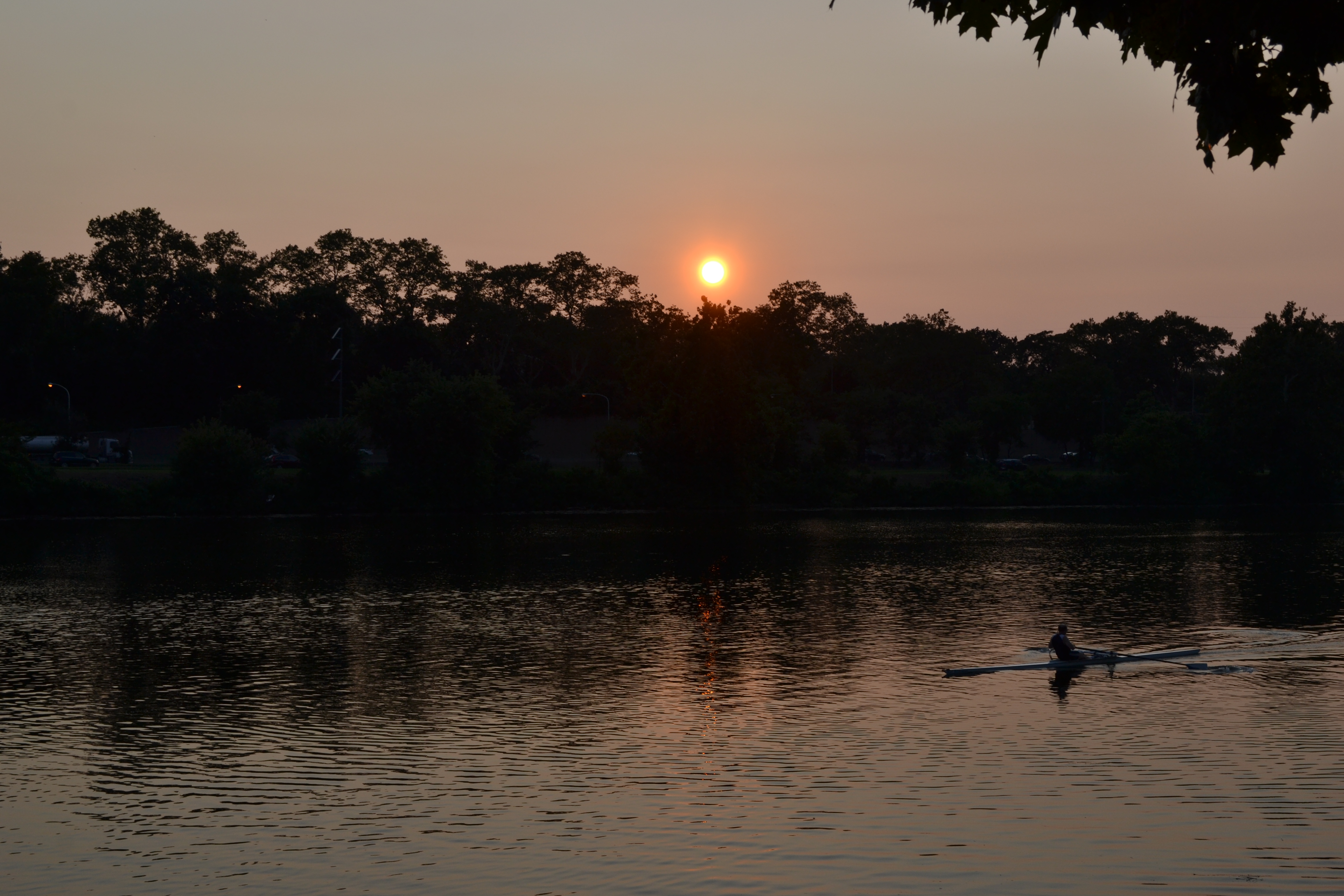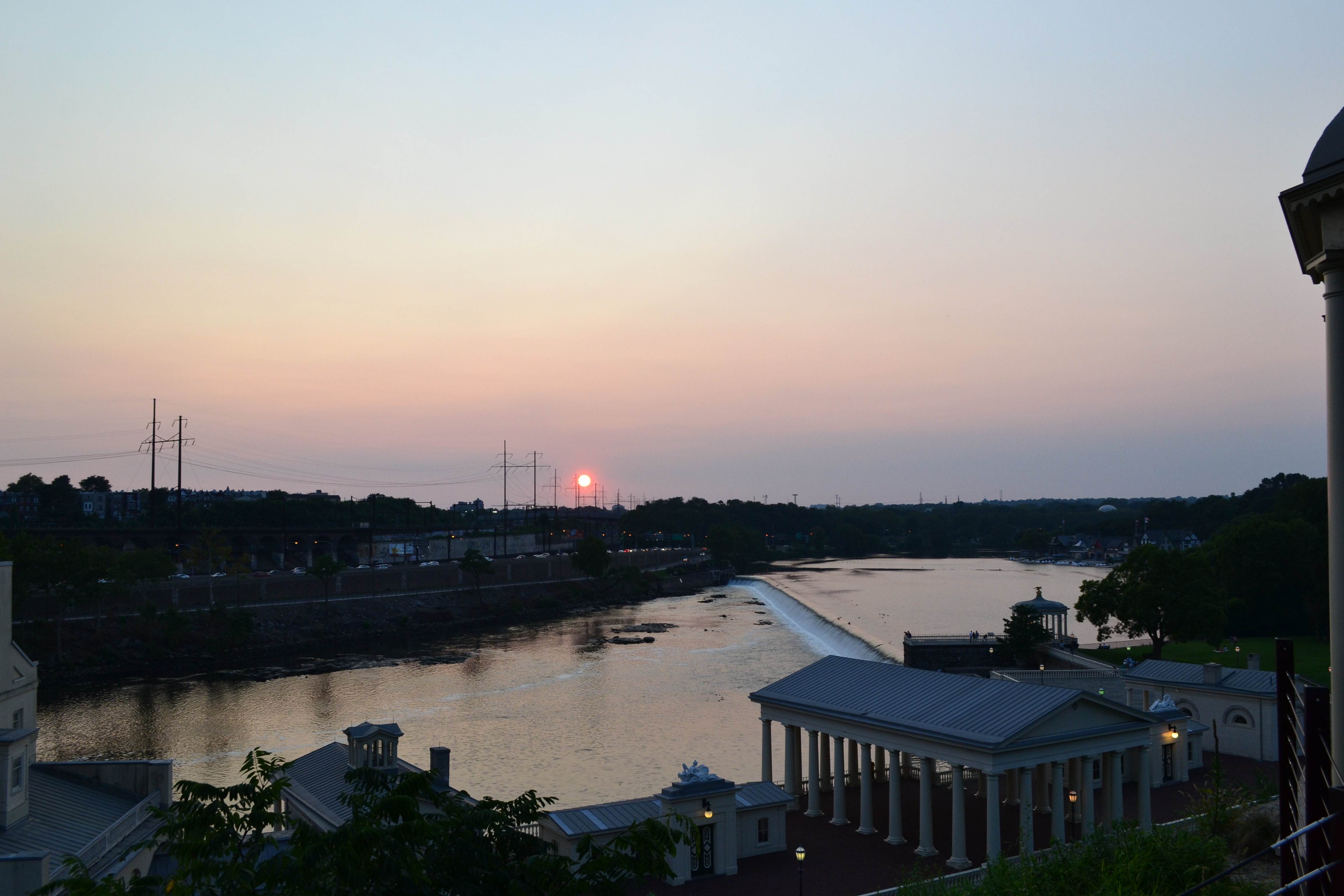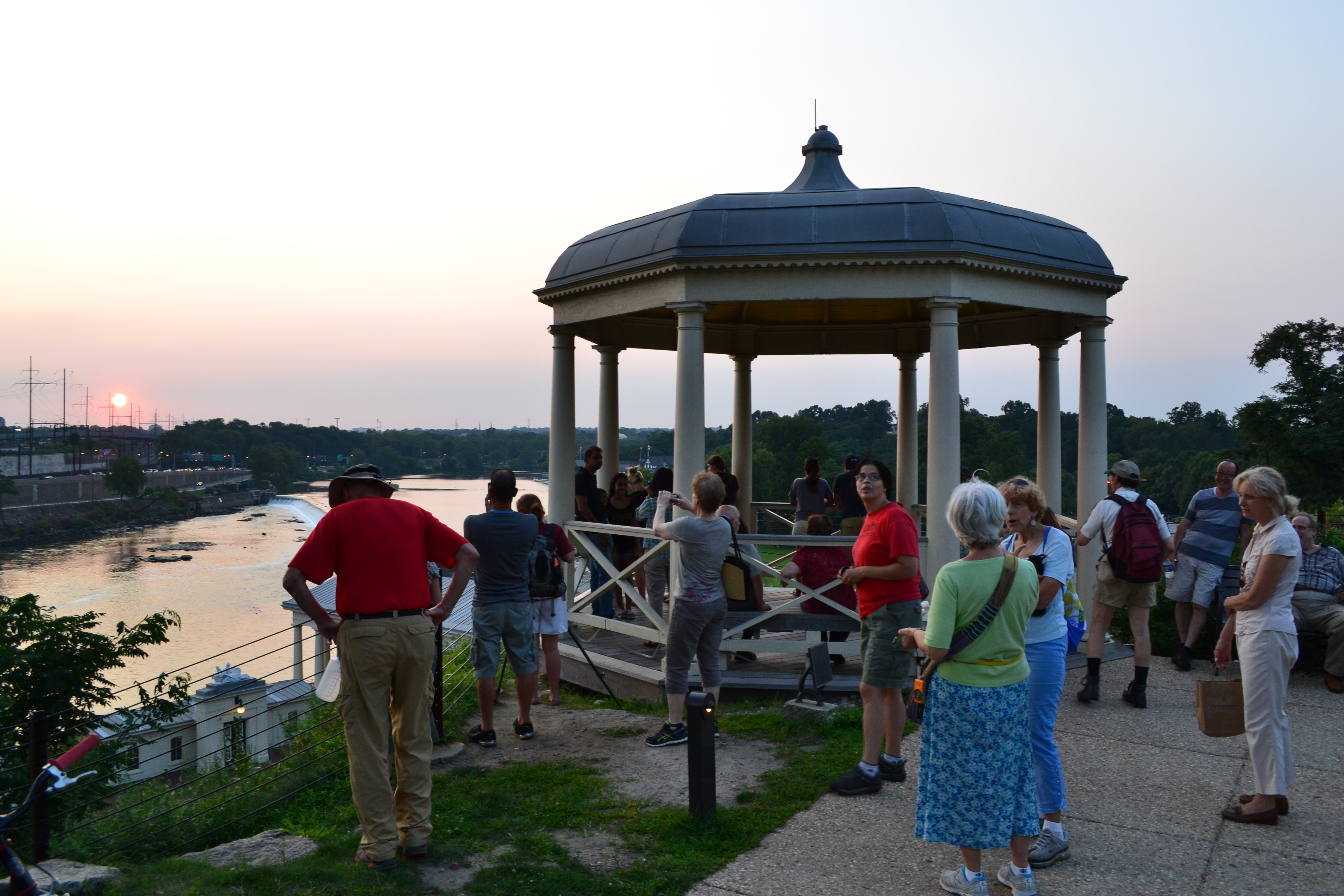Touring the Schuylkill’s historic gazebos with the Parks Alliance
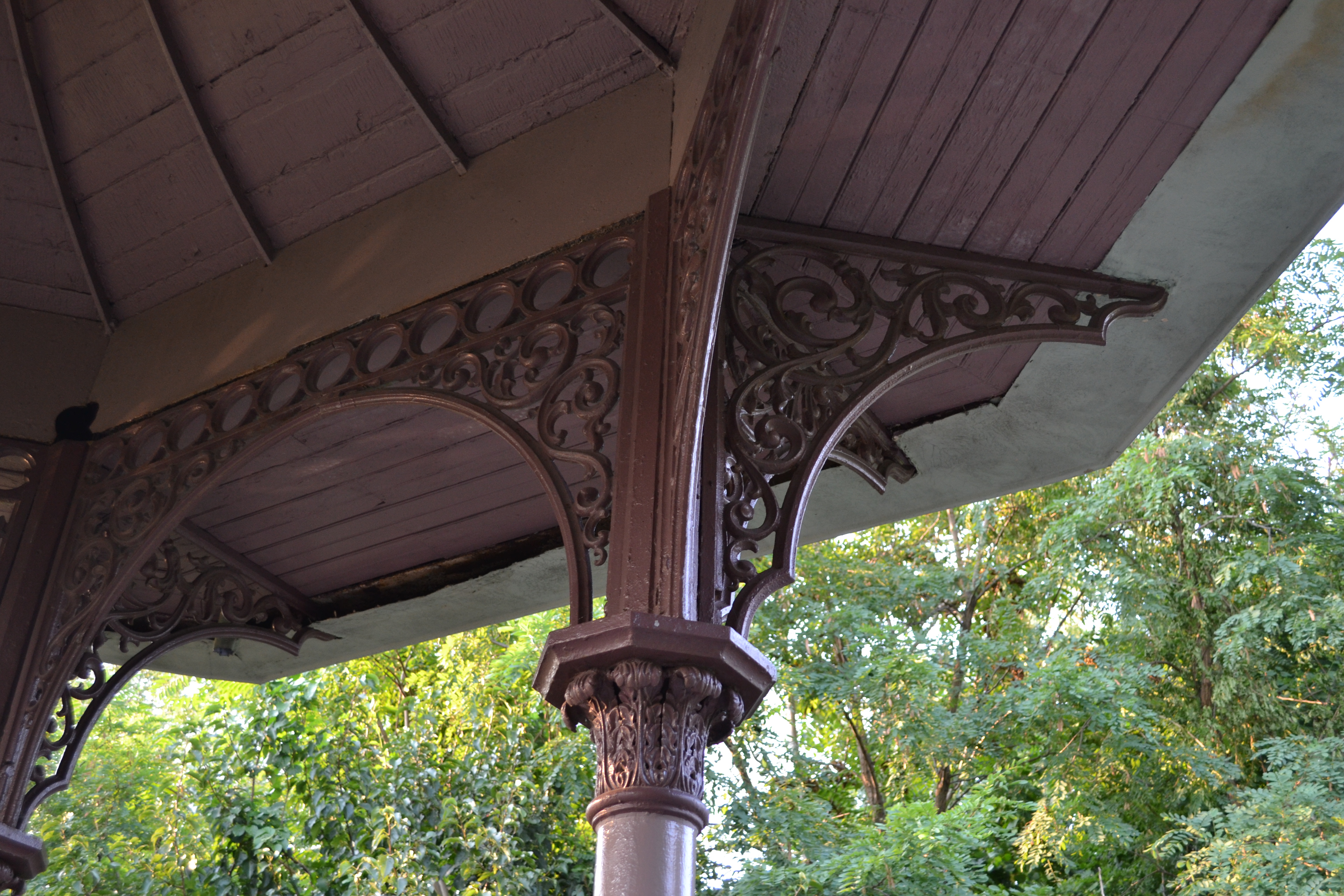
From the Philadelphia Museum of Art (PMA) upstream, the Schuylkill River’s eastern bank has four gazebos dating back to the 1800s, originally built to capture views of the city’s impressive water system. This week Philadelphia Parks Alliance Board President Bob Thomas led an evening walking tour of the four gazebos, two of which are well known and two of which are rarely visited.
The tour started at the smaller of the two gazebos behind the art museum. Today that gazebo is a recreation of a wooden version originally built in the 1870s. Though the gazebo today is made out of steel, a steel that weathers specially was used to give it a more authentic appearance.
The original gazebo was built to look out on the Fairmount Water Works, which was the country’s first public municipal water system and became a top tourist destination. Until the early 1900s, one of the facility’s water buildings was located at the top of the hill where the Art Museum now stands, and until the 1950s, the iconic dam had locks to help boats travel further up river.
From there the tour crossed Kelly Drive toward Lemon Hill. In the late 1700s and early 1800s, wealthy Philadelphians built mansions on the banks of the Schuylkill River just outside the city’s core. They used these as summer retreats and escapes from the city, but by the late 1800s, train travel began making it easier to retreat further from the city.
“The sense of isolation, of privacy was not the same,” Thomas said. “The travel changed everything.”
And for this reason, some of those hillside homeowners may have been more willing to sell their properties to the city when it first proposed turning their private land into Fairmount Park. As industry along the river boomed, the city was becoming increasingly concerned about pollution from mills and factories upstream in Manayunk. Officials felt the need to preserve what is now Fairmount Park to protect the area from both development and pollution.
Mill owners in Manayunk balked at the idea. One coalition even proposed diverting water in a canal around Manayunk so that the clean upstream waters would not be polluted before they reached the Fairmount Water Works.
“The idea was then even [Fairmount Park] could be converted into industry, and it came very close to that,” Thomas said.
Just past Lemon Hill mansion, the tour stopped at one of Fairmount Park’s lesser-known gazebos. This one is meant to look out on the Schuylkill River, just north of Boathouse Row, but overgrown trees block most of the view.
The group continued past the site of the former Sedgley Mansion and came upon the Girard Ave Bridge. There Thomas told attendees of a gazebo that is often forgotten, perhaps understandably since it no longer exists. Roughly across from West Sedgley Drive and Girard Ave, the former district of Spring Garden had its own water works. With it, Spring Garden had a gazebo. After the water works shut down, it stood as an abandoned industrial site before being cleared out and turned into a garden. Somewhere in that process the gazebo either fell down or was torn down. The garden itself is now overgrown beyond recognition.
The tour looped down the side of the Girard Ave Bridge, which in a past life had a lower deck for passengers to cross, and returned to the Schuylkill River Trail along Kelly Drive. There Thomas pointed out the boathouse that doubled as a lighthouse. While the locks over the dam and canal were still active, the lighthouse was installed to keep boats traveling down river from going over the dam. There is a good chance people walking, running or cycling on this portion of the Schuylkill River Trail have passed the lighthouse and remarked at its shape but never fully understood its purpose.
Just as the sun was setting, the tour concluded back at the two gazebos near the PMA. Attendees got a clear view of a large, orange summer sun setting to the west as the equally impressive full moon rose on the other side of the museum.
WHYY is your source for fact-based, in-depth journalism and information. As a nonprofit organization, we rely on financial support from readers like you. Please give today.



